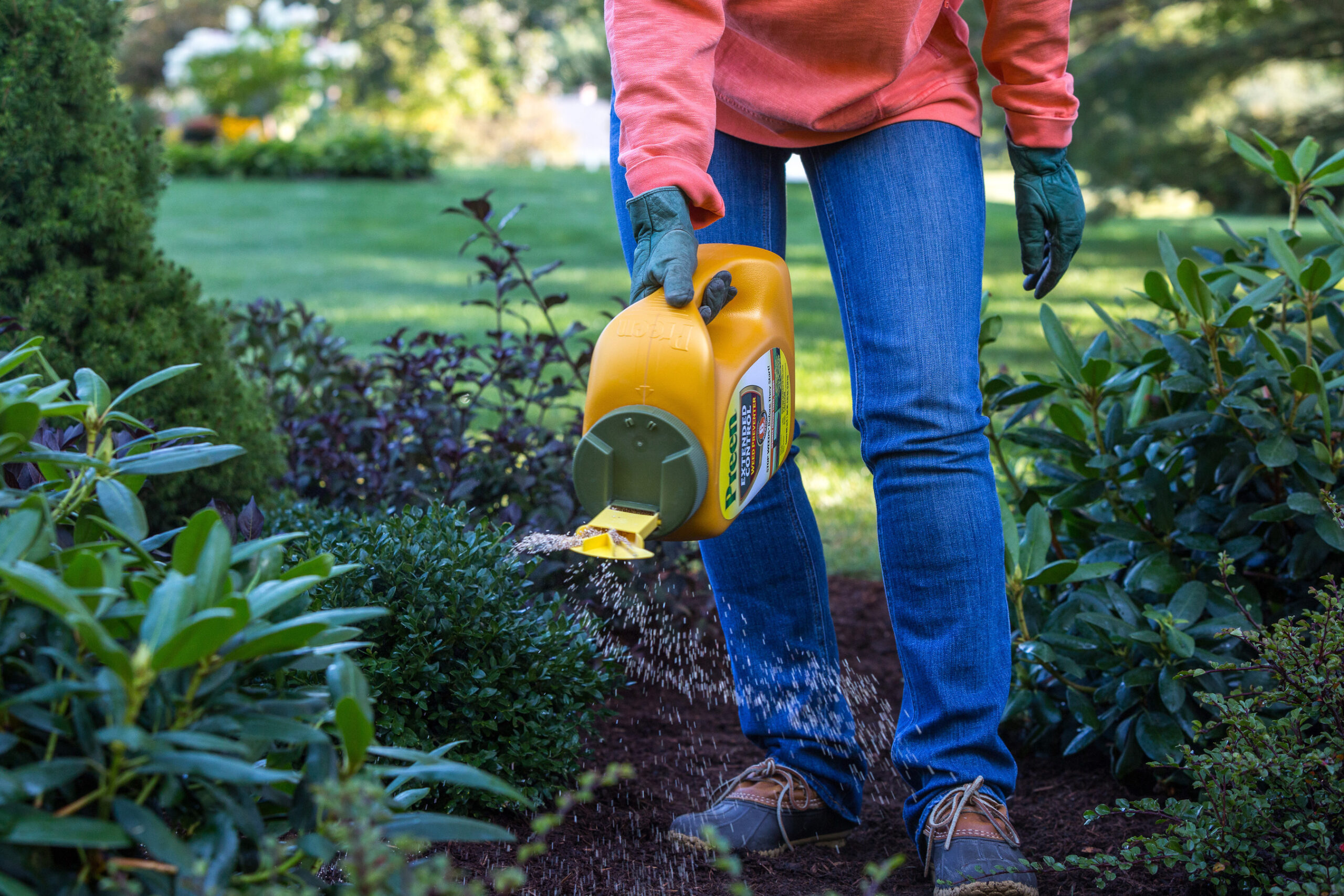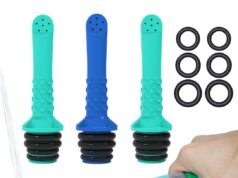Preen is a lineup of lawn and garden products that are manufactured by Lebanon Seaboard Corporation. Lebanon Seaboard Corporation also manufactures wild bird food and professional turf products. Other brands that are connected to Preen include Greenview Fertilizers, ProScape, Lebanon Pro, and Woodace.
The company began its origins in 1947, and there are many Preen SKUs available for purchase throughout the world.
Here is a complete list of Preen products:
- Preen Extended Control Weed Preventer
- Preen Garden Weed Preventer
- Preen Southern Weed Preventer
- Preen Garden Weed Preventer plus Plant Food
- Preen Southern Weed Preventer plus Fire Ant, Flea, and Tick Killer
- Preen Weed Prevent Plus Ant, Flea, and Tick Control
- Preen Mulch with extended control weed preventer
- Preen Natural Vegetable Garden Weed Preventer
- Preen One Lawncare
- Preen Lawn Weed Control Plus Crabgrass Preventer
- Preen Lawn Crabgrass Control
- Preen Lawn Weed Control
We have done extensive research and testing of Preen products and will explain the environmental impacts of the weed control methods in this article.
Preen Weed Control
The first product we will examine is Preen Weed Control. Firstly, this product must be handled correctly as it is environmentally toxic and even harmful to human health. It is really a last resort to eliminate weeds from your lawn or garden. Some of the human health effects include skin rashes, respiratory problems, eye irritation, and you may even need to call a poison control center if you are exposed to the product in an unsafe manner. The pesticide is toxic to fish and aquatic invertebrates and can negatively impact non-target plants resulting in their death.
If you must use this product and still want to protect the environment, you must ensure that you do not allow the pesticide to run-off into storm drains, gutters drainage ditches, or surface waters. It is a good idea to check the weather channel before using the pesticide because rain within a 24-hour period of using the product can result in water contamination. It is effective at eliminating a wide variety of stubborn weeds including dandelion, chickweed, spurge, knotweed, henbit, plantain, and can be used on warm and cool-season turfgrasses.
Even though this is a post-emergent granular weedicide, it does not contain highly toxic chemicals found in similar weed control products. For example, the composition is comprised of cellulose paper fiber, corn cobs, and dipropylene glycol. Dipropylene glycol is an odorless liquid with low toxicity that is used as an additive in many skin and hair care products, so it is safe. It is the mixture with the other ingredients that make it a toxic compound.
Preen Weed Preventer
The Preen Weed Preventer is marketed as an eco-friendly option to preventing weeds from growing in the first place. It is a product that can control all kinds of weeds but will not help with runners and rhizomes. Some of the weeds it helps to control includes:
- Annual bluegrass
- Bermudagrass
- Black medic
- Black nightshade
- Clover
- Creeping Bentgrass
- Buckhorn plantain
- Catchweed bedstraw
- Curly dock
- Green foxtail
- Dandelions
- Giant foxtail
- Shatter-cane
- Lamb’s quarters
- Large crabgrass
- Smooth crabgrass
- Yellow foxtail
- Purslane
- Orchard-grass
- Redroot Pigweed
- Woolly cup grass
It is made of corn gluten which is a natural material. However, you still must exercise caution when using the product because it can cause health problems such as breathing difficulty or a skin rash if in contact with the substance.
This is still a pesticide albeit it is marketed as a natural product. Disposal of waste should not make its way into the sewage system and should be performed correctly. Thermal decomposition of the product can lead to toxic gases and vapors.
The critical thing to remember about the Preen Natural Weed Preventer is that it’s a pre-emergent granular herbicide so it will work only to prevent the weeds but will not get rid of existing weeds. You will still need to employ methods of weed control that may require the use of chemicals toxic to the water supply.
There are natural methods to control weeds which we will explore further in this article.
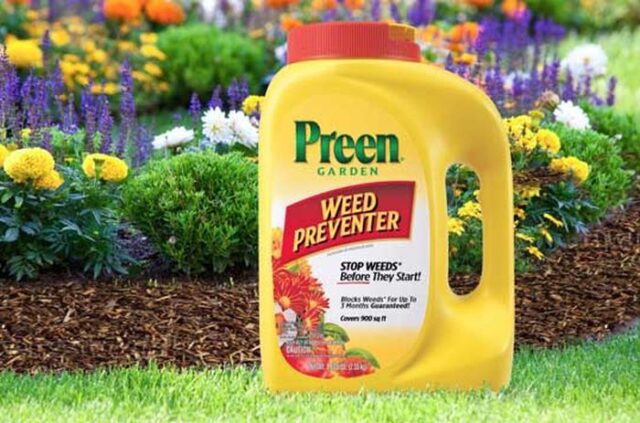
Preen Mulch
Preen Mulch contains Trifluralin, Isoxaben, and Fuller’s earth among others such as wood bark mulch and non-hazardous colorants. Let’s explore trifluralin and isoxaben further.
Trifluralin is featured on the PA Worker and Community Right-To-Know Act. In 1979, the Environmental Protection Agency found that the component
N-nitrosamine present in Trifluralin was known to cause tumors and mutagenic effects in mammals. As a result, the EPA initiated a policy that mulch products containing trifluralin not contain more than 0.5 ppm of N-nitrosamine contaminants.
Trifluralin isn’t acutely toxic to test animals by oral or inhalation ways of susceptibility. Pesticide products comprising trifluralin may be somewhat toxic to relatively non-toxic, depending on the type of composition. Nausea and severe gastrointestinal pain may happen following consumption of trifluralin.
Trifluralin doesn’t cause any skin problems, but allergies are likely to occur in some people. Individuals with asthma or respiratory illnesses should avoid coming into close contact with the mulch.
On the other hand, isoxaben is a pre-emergent herbicide that is used primarily to control broadleaf weeds in vineyards and tree nut orchards. The National Center for Biotechnology Information, U.S. National Library of Medicine declares isoxaben has a potential carcinogen meaning it may cause cancer. However, this has been shown only in large quantities, and the amount of isoxaben in Preen is meager with an actual weight of only 0.0008%. Under the Comprehensive Environmental Response, Compensation, and Liability Act (CERCLA) is has been labeled ‘yes’ in hazard categories, acute and chronic. You may consult the safety data sheet for further information.
How to Be Environmentally Conscious when Gardening with Preen
A recent survey conducted by Sustainability Energy discovered that nine out of each ten homeowners assume they think it essential to care for home landscapes in an environmentally accountable process. However, very few of these people we able to demonstrate they can carry out the processes of gardening in an environmentally friendly way and 30 percent admitted to not caring at all.
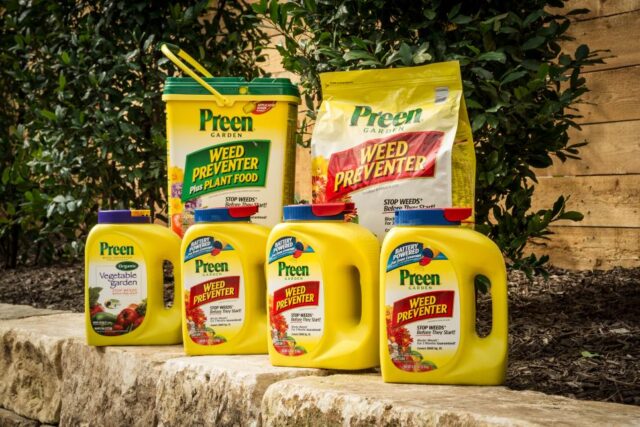
Here are some tips to be a green gardener when using Preen:
1. Not all bugs need drugs
Preen is a chemical pesticide, and even though it may use natural ingredients like corn starch, the formulation and mixture of several ingredients make it harmful for many plants and animals which is why it is so effective at eliminating unwanted weeds. Therefore, you will need to understand that you shouldn’t use Preen in a ‘just in case’ manner because while the weed preventer will be effective at keeping the lawn intact, it is still not a remedy for exploring greener alternatives to preventing unwanted flora.
2. Compost
Composting is a great way to add a natural fertilizer to your lawn. You can compost your grass clippings after you finish mowing your lawn because the clippings feed your lawn as they decay.
Compost can also come from other sources such as leaves and kitchen scraps. When done right and done so with the use of the correct tools, compost doesn’t have to smell. For example, using a compost tumbler can help adequately mix the materials and mask the smell of more prominent components.
3. Keep your yard bird and insect friendly
There are many beneficial insects that help preserve the pristineness of your garden or lawn. Some may require a pesticide to prevent them from eating away at your fruits or vegetables, but birds can help you in taking care of the insects. Crows, for example, are avid hunters of many types of pest-like insects.
Frequently Asked Questions About Preen
Here are some frequently asked questions about Preen you many find useful in understanding, is Preen Bad for the Environment?
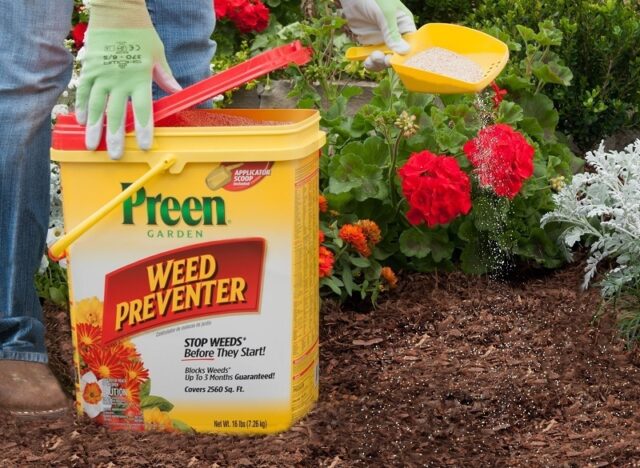
- What is the main active ingredient in Preen?
Preen contains Trifluralin or Treflan for short. As explained in the preceding paragraphs, it is present in tiny quantities with only enough being incorporated to kill the weeds. Government regulations do not permit the use of Trifluralin beyond safe levels so unless you are coming into the first-hand contact with the weed preventer; you should be fine for using it. You always want to make sure you follow the exact instructions written on the labeling specific to the product. Preen also contains corn starch and biodac which is recycled newsprint. These two materials will often comprise the bulk of the weed preventer.
- How long does Preen work to keep weeds out?
Preen can keep weeds out of the garden for 3-4 months per application. If you live in an area where there is a lot of rainfall or humidity, you may experience run-off of the weed preventer so you may need to reapply before the 4-month mark.
- Is Preen Biodegradable?
Yes, Preen does biodegrade but at a relatively slow pace. It can take up to 4 months for it to completely dissolve depending on the temperature, environment, soil type, sunlight, and amount used.
- Does Preen require water to activate?
Certain Preen products will require water to activate. The granules will generally remain unaffected and will dissolve for a period of weeks. Again, the granules are the carrier agents and made from corn or biodac. If you live in a dry, desert climate, then it is recommended to lightly water the areas in which the weeds are expected to grow. This will activate the product and begin the process of inhibiting weed germination.
- Will Preen harm desired plants?
Most Preen products are selective meaning they only target the list of weeds written on the labeling. It is still recommended being specific with the application of the weed control product and limit it to the area in which the undesired weeds are growing.
- Is there a specific time of year when Preen works best?
Preen works best in the Fall because it is the time when weeds actively germinate during September and October.
- Does Preen Weed Preventer kill existing Weeds?
No, the weed preventer prevents new weeds from growing. You will need to find a different method of removing the existing weeds before applying Preen. You will need to pull the weeds from the root as tilling will not work.
- What if I accidentally apply Preen to plants, how do I prevent injury to them?
You will need to use activated charcoal granules as a post-application method to the pre-treated desired plants. Charcoal bricks will not work.
Conclusion
In conclusion, Preen is mildly harmful to the environment like many weed control products. It is evident the company has taken the initiative to minimize the effects on the surrounding environment by using carrier agents such as recycled newsprint (biodac) and corn cob material to make up the bulk of the product. The active ingredient Trifluralin has been shown to cause harmful effects on human and plant health. If you are like us and would like to resort to more green, eco-friendly methods of weed control, we recommend exploring other options such as manual removal and more natural ingredients such as salt-based solvents.

